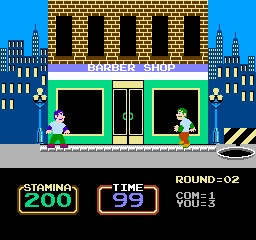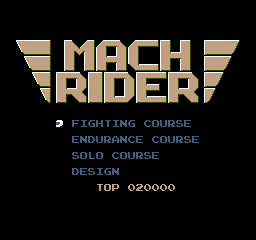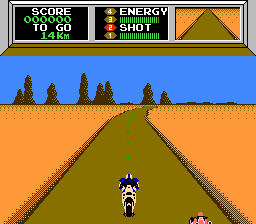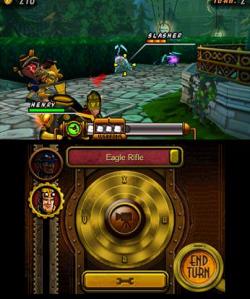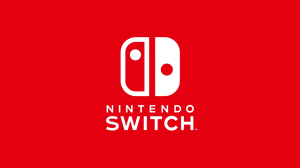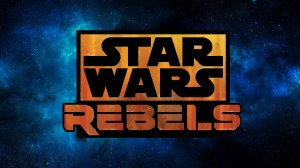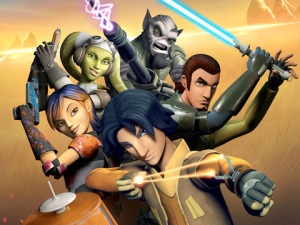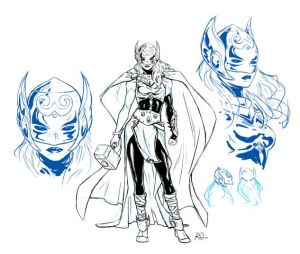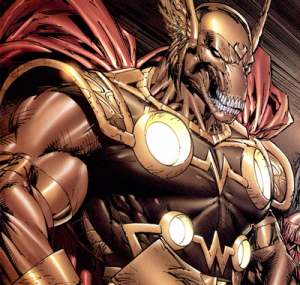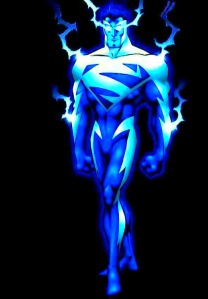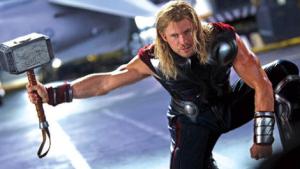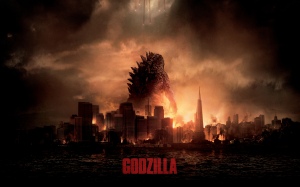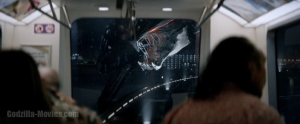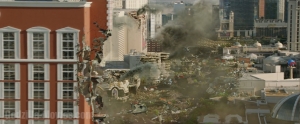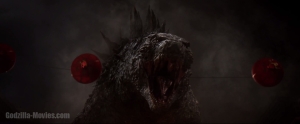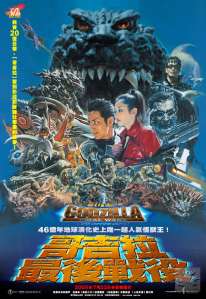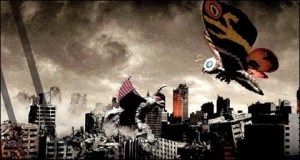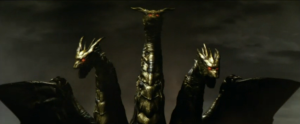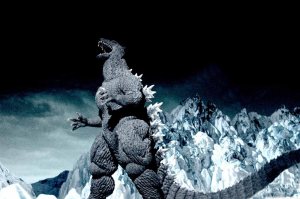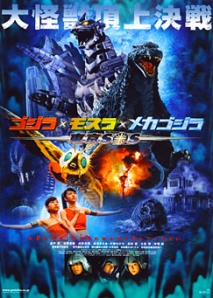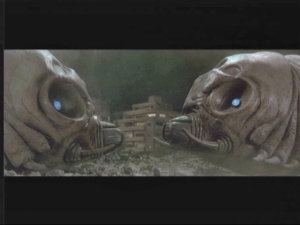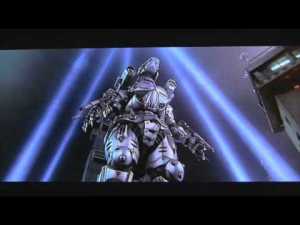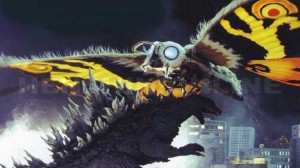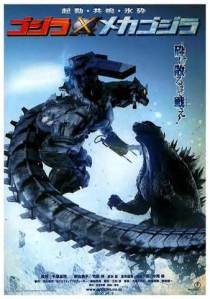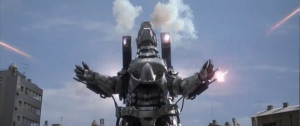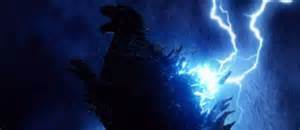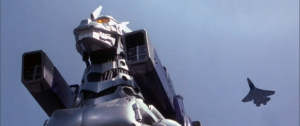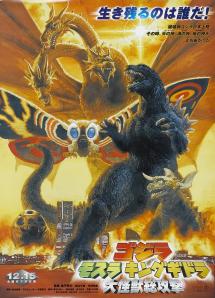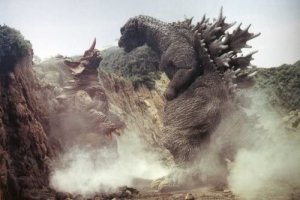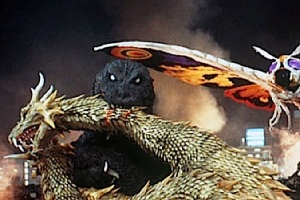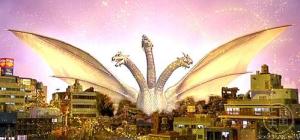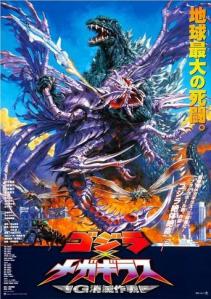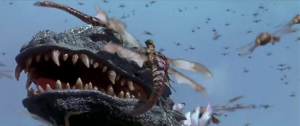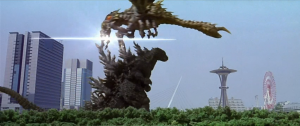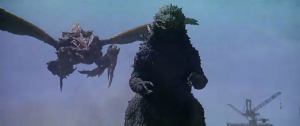It is that time of year again, when the faithful video game nerds of the world sit glued to their screens to get the latest news about what the next year in gaming will bring. And while many are chomping at the bit for news about Microsoft’s Scorpio or…whatever Sony is doing…I will be tuning in to Nintendo’s coverage for their latest. While I’m sure it will be a whole lotta Super Mario Odyssey, there has been a persistent rumor making the rounds lately concerning Retro Studios.
For the uninitiated, Retro Studios is a Texas-based video game company owned by Nintendo. Their purpose was to create games aimed at an older and more American demographic. This was at a time when Nintendo was losing market share to the Sony Playstation, which had games like Resident Evil and Final Fantasy VII that catered to an older audience who had “grown up” from Nintendo’s games. Retro Studios set out with a small team that put together four or five game concepts, all of which were cancelled when Nintendo handed them the Metroid franchise. The Metroid series, which focused heavily on exploration and non-linear gameplay, had not had an entry since the 1994 SNES masterpiece Super Metroid. The series was not a particularly strong seller, and missed out on the N64 era completely, but it had been more popular in America than in Nintendo’s native Japan. Retro took the game and decided to make it into a “first person adventure”, perhaps in no small part since shooters like Quake and the upcoming Halo were popular in America. However, while those games focused on action, Retro’s Metroid would focus on the exploration aspects the series was known for, while still being presented in a first person view. The final product was Metroid Prime, released for the Gamecube in 2002. The game was a success, reviving the dormant series and producing two more direct sequels.
Unfortunately, the Metroid series has fallen on hard times as of late. After the Prime trilogy, the Metroid license was handed off to other studios, producing the disappointing Metroid: Other M and the critically and commercially panned Federation Force. Nintendo is not shy about mothballing stagnant series, and fans worried that Metroid would meet this fate. However, reports came in that Retro Studios was working on something “big” for the Nintendo Switch. The flames were fanned when sci-fi video game composer (and noted Metroid Prime fan) Alexander Brandon revealed that he had been to Retro Studios to work on something “exciting”. Hopes are high that the Metroid Prime series will be returning to Retro, and we don’t have long to find out.
This got me thinking about other games that Retro could work on. After Metroid Prime, the studio was handed the Donkey Kong Country series (another series that performed better in America than in Japan), and produced the excellent Donkey Kong Country Returns for Wii, and Donkey Kong Country: Tropical Freeze for Wii U. It seems Retro has that “magic touch” when it comes to reviving once great series, and I have come up with 5 series that could stand a revival, or at least a second look (admittedly, most of these series were never really “great”, and only one of them has more than one entry anyway.) I’ve chosen these series based on how they might appeal to an older and more American demographic, and have added some notes on how I think they could be re-tooled for a modern audience. So, with that lengthy intro out of the way, let’s get to the list!
5. Urban Champion
The Original: A very early one-on-one fighting game, Urban Champion was released on the NES during its second year, and has been re-released for just about every system since the Wii (for some reason.) The gameplay consists of two characters who trade punches, attempting to knock each other back and into a manhole on the edge of the screen. Sometimes, a woman will appear in a window and drop a flower pot, which you will want to avoid. Also, a police car will drive by every so often, causing both fighters to return to their starting positions, whistling while they wait for the police to leave, which will waste precious time. This is one of those early, one-screen games which contains no true ending, just a play for the high score. Both fighters have a quick punch and a slow punch that causes more damage. Each punch can be thrown high or low, and can be blocked by pressing up or down on the controller. The characters are slow and the fighting is rather clunky in execution. About the only real thing the game has going for it is its personality. The entire concept of knocking an opponent into a manhole is rather silly, and every fight ends with the victor flexing while showered with confetti. The game may not be polished or deep, but at least it has fun with itself.
The Modern Proposal: A Not-As-Violent God of War
If I were to propose a new version of Urban Champion, the first thing I’d do would be to ditch the one-on-one aspect. Between Smash Bros. and ARMS, Nintendo seems to have that square filled as of late. Instead, I’d make the new game a beat em’ up in the vein of Final Fight or Double Dragon. These types of games were really popular in American arcades in the early 90’s (anyone remember pumping quarters into the X-Men arcade game? Teenage Mutant Ninja Turtles? Even the Simpsons got a game in this style!) The weakness of this genre, however, is how repetitive it can be. There are only so many ways to punch the same four or five enemies until you’ve done everything. This caused the genre to go stagnant for a long time, until many new games, most notably God of War, introduced the concept of leveling up your character. By earning points, your character could learn new moves which would help take out large groups of enemies or better fight more powerful ones. This is the system I would use for the new Urban Champion. I would have a few characters available to play as (about 4), and each would have a skill tree that they could update with points earned from defeating enemies. Leveling up the skill tree would allow each fighter to extend combos or learn new moves, and since each character would learn different moves, this would encourage players to try them all to see what new moves they can learn. While most games in this genre have tended toward the more violent end of the scale lately (see God of War, Bayonetta, and God Hand), I would keep the violence in Urban Champion a bit more family friendly. About the only redeeming factor of the original game was its goofy sense of humor, and I think that should stay. A punch combo could end with the player slam dunking an enemy into a garbage can, complete with pinball sound effects, for example. With the Donkey Kong Country Returns series, Retro Studios showed that they can produce a game that stars cartoon apes and yet still exudes personality and doesn’t feel childish (if anyone wants to argue otherwise, go play the temple levels in those games first. Yikes!) Also, 2-Player is a MUST.
4. Mach Rider
The Original: Another early NES game, Mach Rider was an attempt to combine racing with shooting. The titular Mach Rider would ride his Mach Cycle through apocalyptic wastelands in search of survivors of an alien war. At least, we were told they were apocalyptic wastelands, the courses weren’t very detailed, this was early NES after all. The Rider would be challenged by riders in other vehicles, which would have to be either shot with the Mach Cycles’ guns, or knocked into other hazards on the road. The view was from behind the rider, and used the limited power of the system to simulate great speeds, faking the scaling effect that the SNES would be later be known for. The game has a lot of ambition, but it was marred by poor controls and especially punishing difficulty. A track editor was included, similar to the one included with Excitebike, but there was no way to save tracks.
The Modern Proposal: Combat Oriented F-Zero
Mach Rider and F-Zero are somewhat related in the Nintendo universe. Both were created by the same team, and both feature extremely fast vehicles in a future setting. F-Zero hasn’t had an entry since F-Zero: GP Legend on Gameboy Advance about a decade ago, and fans have been begging for another entry ever since. However, Shin’en Media seems to have the futuristic racing angle taken care of with its Fast Racing series. So, I propose a revival of Mach Rider in F-Zero’s stead. The basic idea of the game is pretty solid, so I’d focus instead on tweaking the controls and just generally expanding the experience, along with implementing some ideas from the Story Mode of F-Zero GX. I’d start by giving the game an actual story, since the original was just a never-ending set of levels. You could pick a course, and race to the end while fighting off attackers in other vehicles. You could upgrade your weapons, and earn different types of weapons and even vehicles for more options. I would be sure to include some levels based on the “Death Race” mode from F-Zero X, where you race around a level fighting off a set number of attackers, as well as other scenarios similar Story Mode scenarios such as racing to save survivors from a bomb, or escape from an exploding tunnel, or any other speed-based scenario. Basically, I’d give people the F-Zero game they’ve been asking for, but with a focus on action rather than racing.
3. Battle Clash
The Original: Many of you remember the NES Zapper, along with the legendary Duck Hunt. Fewer of you will remember the SNES Super Scope, which was basically the Zapper, but a BAZOOKA. If you were one of the lucky few to own this amazing device, you almost certainly had Battle Clash, which was about the only game worth owning for it. Battle Clash took place in (yet another) post-apocalyptic future in which the leadership of nations is determined by one-on-one giant robot fights. Your robot is unusual in that it has two pilots, the driver and the gunner. You are the gunner, and it is your job to not only shoot the enemy robot, preferably in their weak spot, but also block their incoming shots. Enemy robots can be damaged on any of their limbs, and damaged limbs can eventually be shot off (cathartic!) The robots are well designed and the action is quick and challenging. This game did well enough to warrant a sequel called Metal Combat: Falcon’s Revenge (the title had absolutely NOTHING to do with the popularity of Mortal Kombat at the time.) As good as Battle Clash was, Metal Combat was an improvement on almost every level. The graphics were better, the control was tighter, the enemy designs more interesting, and best of all, there were two playable machines, each with different shot attributes. These two games, frankly, are worth it to track down an old Super Scope.
The Modern Proposal: Shooting Combat + Mech Combat
The split Joy-Con Controllers would be a perfect fit for a new Battle Clash. I would have the gameplay split into two different sections. The first portion of each battle would be similar to the original games, where the enemy mech zooms along the landscape, firing shots at your mech. The left Joy-Con would control the movement of the mech, while the right Joy-Con would be turned over to use the sensor on the bottom to point at the screen ( like a Wii Remote), and the face buttons would fire. However, after this portion of the battle ends, both mechs will meet in a location and battle it out in a more personal manner. While the left Joy-Con would still control movement, the right could be used in a variety of ways depending on the weapons the player chooses to use. You could continue to use shooting weapons and the controller would be held like before, or you could switch to a sword or other melee weapon and the right Joy-Con could be turned over and used to control it that way. Or put all weapons away and use both Joy-Cons to duke it out, ARMS style! If both mechs were in a city, you could pick up bits of the environment and use them to your advantage, such as throwing buildings or using shipping crates like knuckle dusters (like Pacific Rim.) Retro could even take a page from Capcom’s Steel Battalion and include maintenance for the mechs, as well. Say a limb gets damaged, the mech could put up a shield while the player must repair the damage before the shield breaks. Add in a co-op mode, with one player controlling the mech and the other controlling the weapons, and a modern Battle Clash could become a noteworthy title.
2. Drill Dozer
The Original: Drill Dozer is a side scrolling platform game developed by Game Freak, the company best known for their work on Pokemon. The protagonist, Jill, is thrust into the leadership of her father’s band of thieves after a rival group beats him up. The rival group, the Skullkers, stole a red diamond that belonged to Jill’s deceased mother, and she sets out to get it back by using her father’s invention, the Drill Dozer, a mobile drilling mech. The gameplay consists of using the drill to solve puzzles and defeat enemies. The drill can be spun clockwise or counter-clockwise by using the shoulder buttons, and certain obstacles can only be passed by spinning the drill a certain way. For example, there are red that are only passable by spinning the drill clockwise, and blue tunnels that are passed by spinning the drill counter-clockwise. No points for guessing that you eventually run into tunnels with both red and blue portions, and you have to alternate spinning the drill in both directions. The game comes up with several inventive applications for the drill, such as attaching a propeller and using it to fly, and using it to swim underwater. The drill can also be upgraded, allowing you to return to previous stages to explore new areas.
The Modern Proposal: …Pretty Much The Same Thing
Of all the games on this list, this is the one that Retro Studios would least likely be given, since Game Freak worked on the original. There aren’t many things to do differently, either, since the original is something of a platforming masterpiece. If Retro were to adapt it to be more attractive to western audiences, I would probably tweak the art style to be similar to Donkey Kong Country Returns, as opposed to the anime look of the original. I might include a hub world, as opposed to linear levels, as well. Since the group from the original are referred to as thieves, it might be an interesting angle to have them pilfer items from different locations, with several options available to the player on how to get them, but that might detract from using the drill in ways the original did. Overall, I’d keep it mostly the same, with a special emphasis on the good level design that the original is known for. Retro Studios has shown they have a handle on interesting level dynamics with the Donkey Kong series, so I say let them have a crack at Drill Dozer!
1. Code Name: STEAM
The Original: If you own a 3DS and don’t own this game, do yourself a favor. Stop what you are doing, run to the nearest electronics store, and buy it! Code Name: STEAM is the most recent game on this list, and unfortunately, didn’t receive much love when it was released. The game is set in a fictional, steam-powered world circa 1870, and features a strike team made up of characters plucked from American history, folklore, and literature using steam-powered weapons to combat Lovecraftian aliens. Also, the team is led by Abraham Lincoln (who faked his own death and is voiced by Wil Wheaton) who occasionally joins the fight inside of his giant, steam-powered mech called A.B.E. Yes, this game features a giant, robot Abraham Lincoln. In addition, the art style is made to look like a comic book, to the point that the game begins with an unseen person sitting down and opening up a Code Name: STEAM comic. The gameplay is basically “real time Fire Emblem“, which shouldn’t be a surprise considering the game was made by Intelligent Systems, who also created that particular series. You create a team of four characters, then move to an over-the-shoulder view making your way across a level. You can move a certain amount of spaces and use certain weapons based on how much steam power you have left. The focus is on setting ambushes for your enemies as opposed to always meeting them head-on. Due to this, plus the lack of option to see the entire map from an overhead prospective, can make levels drag on a bit longer than they should, but with some applied patience, this game is very rewarding and deserves to be in every 3DS owner’s library. I mean, come on! Giant, robot Abraham Lincoln!
The Modern Proposal: Third-Person Steampunk Overwatch + Proper Sequel Sister Game
The idea behind Code Name: STEAM was to present a Fire Emblem-style strategy game that would appeal to players that weren’t familiar with Fire Emblem. This was the reason for the over-the-shoulder approach, to make it similar to third-person shooters. Unfortunately, this isn’t a game that can be played like a third-person shooter, so it sort of falls into this nebulous area in between the two types of games. So, I’d just make two different games. Retro Studios would head up a new version of Code Name: STEAM that ditches the strategy mechanics altogether and goes for a straight-up action game. In keeping with some of the theme of the original, I’d create a squad of three or four members, then switch between them while attacking enemies and advancing toward a goal. Overwatch is the game I’d take inspiration from, and each character would fill a certain niche, like a tank or a healer. Because of all this, there would be a heavy multiplayer focus with this game, and I would market it to the Splatoon crowd. However, in keeping all the way up with the spirit of the original, I’d have Intelligent Systems create a second, sister game that would play more like the original, with a few tweaks to improve the speed of gameplay (most notably an overhead map.) For the story, I would state that Lincoln survived the events of the original, and uses his believed-dead status to create a new, covert team that can accomplish things in secret now that the original team has achieved celebrity status. The original team can operate in the open, hence the faster gameplay, while the new team must sneak around to stay hidden. Also, I’d make Nikola Tesla the leader of the covert team and give them electric “Teslapunk” weapons to add some variety. The two games would absolutely interact with each other in some way, allowing characters from each game to appear in the other. In addition, I would have an actual comic made, perhaps written and/or drawn by Mike Mignola? The game does look close to his art style. Considering the poor sales of Code Name: STEAM, I seriously doubt Nintendo would have one large follow-up game, let alone two, but hey, this is my list and I’ll put any crazy thing on it that I want!
And there you have it! I am looking forward to what Nintendo has in store for E3, especially in regards to Retro Studios. Hope to see you all during the presentation!


